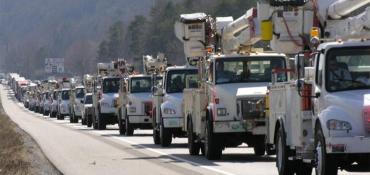
Utility regulators on Tuesday signed-off on a $1.3 billion agreement involving Florida Power & Light’s costs for restoring electricity after Hurricane Irma plowed through the state in 2017.
The Florida Public Service Commission approved the settlement between FPL, the state Office of Public Counsel and the Florida Industrial Power Users Group. The agreement finalizes the costs, which will be covered by the utility’s savings from a 2017 federal tax overhaul.
“The storm that we’re dealing with, Irma, was a tremendous impact to your customers, throughout your service area,” said Commissioner Donald Polmann. “I think everybody should recognize that this has come to a pretty quick closure with the settlement agreement. I do absolutely see this to be in the public interest that we move forward expeditiously.”
The agreement also includes the development of technologies intended to better track future storm expenses for the utility.
Commission Chairman Art Graham predicted a new cost-tracking app will reduce future restoration costs.
FPL had contended it spent $1.375 billion to restore electricity after Irma made landfall in 2017 in Monroe County and then barreled through much of the state. But in filings as recent as late May, the Office of Public Counsel, which represents consumers, and business groups questioned hundreds of millions of dollars in costs.
The agreement includes $50 million in adjustments to accounting for expenses.
The utility, saying it accomplished what the customers expected, reported that 50 percent of its 4.4 million customers that lost power from Hurricane Irma were back online within one day. Within 10 days of the storm, 99 percent of the customers were restored.
FPL spokesman Mark Bubriski said the agreement confirms the company “handled that storm properly.”
“Hurricane Irma may seem like ancient history to some folks, but really it was less than two years ago,” he said. “The regulatory process takes some time to review everything that goes into it.”
As an example of the steps to better track expenses, FPL is starting to employ a smart-phone app for recording time and expenses of crews, which will expand the app’s uses in 2020.
“We have been working on some new technologies to help us better manage, track, and increase transparency around the costs of restoring power after a hurricane,” Bubriski said.
Part of the complexity of tracking expenses is that utilities bring in large numbers of crews from other states to help restore power after major storms.
The utility used workers from 30 states and Canada to restore electricity after Irma, deploying 28,000 workers across its coverage area.
State Public Counsel J.R. Kelly said high costs are expected as utility crews come in as customers demand quick restoration of power. However, he said “we don’t want open checkbooks to these people, pay them exorbitant amounts of money.”


